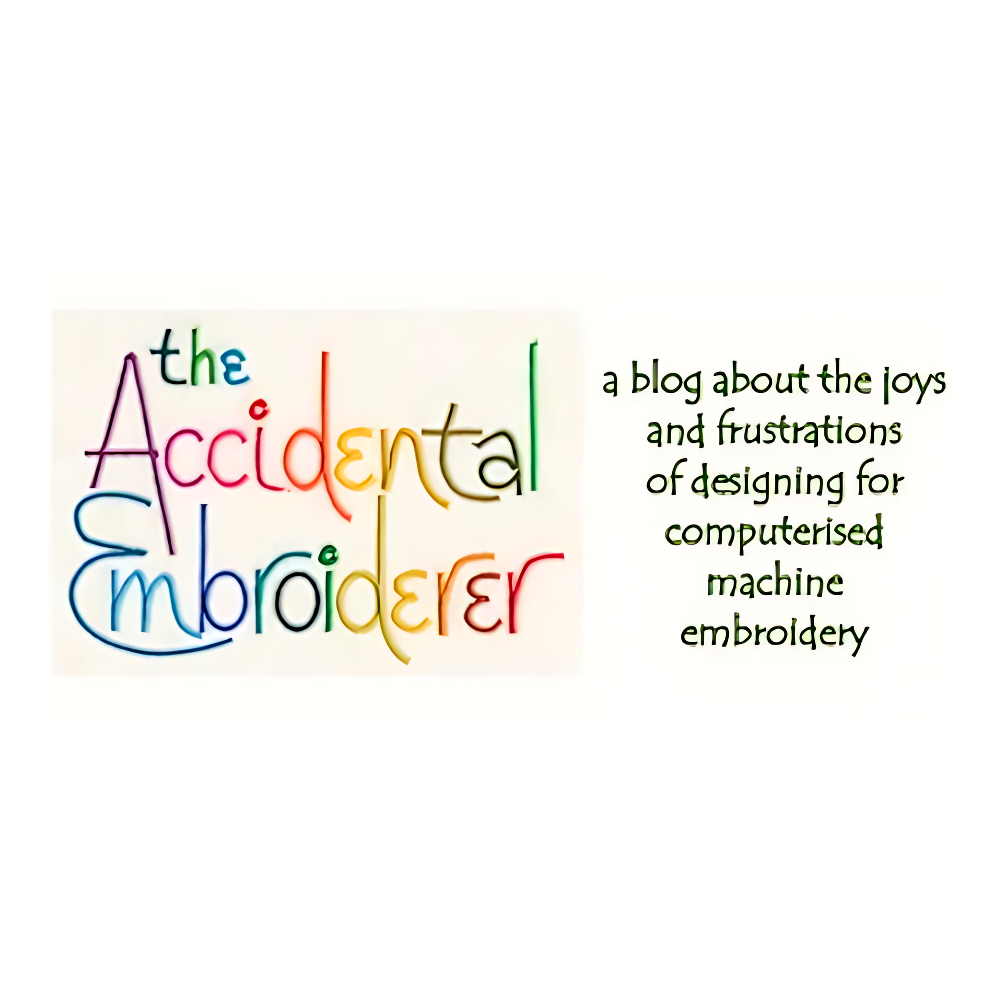Both my parents (and indeed one of my grandfathers) were artists, and my mother’s work is particularly well known (you can see some examples on her website at http://margohoff.typepad.com/)
A few years ago I asked her to make a few sketches for me, which I could use as the basis for embroidery designs. She didn’t quite understand what embroidery machines were, but nevertheless she did a small collection of crayon drawings for me, which I’ve always loved. Not all these drawings were immediately applicable to digitising for the machine, and for a long time I’ve been mulling over ideas of how they could be used as inspiration for embroideries, rather than being digitised directly
One of her drawings which I thought had a lot of potential was this one

She didn’t give names to any of these little works, but to me this one was obviously a drawing of pigeons, and they reminded me of the shapes of tumbler pigeons as they fall through the sky. For a while I played around with realistic designs of pigeons but these always seemed banal and with none of the energy of my mother’s originals

Bluebird v. 1. Boring
Because the birds were supposed to be tumbling through the air I feathered the edges of the wings and tail to give the impression of a fast-falling object, but it was still too stiff

Bluebird v. 2. Falling fast? No, not really
For the next version I made the tail and wings translucent, with abstracted shapes. This was better, but the body was still too stiff and hard

Bluebird v. 3 Better but still too solid
So eventually I just ignored any kind of figurative interpretation. I got rid of the realistic body entirely and used the digitising software to block in large areas of stitching with different densities, and came up with an abstract interpretations of a bird shape

Bluebird v. 4 Much better
I was much happier with this and did some more birds in this style to correspond with Margo's four birds. They may not look like tumbler pigeons at first glance but it should be easy to figure out how they came to look like this

Four abstract tumblers
I really liked the effect of the overlapping areas of light stitching, and I will find ways to use this approach in future designs.
